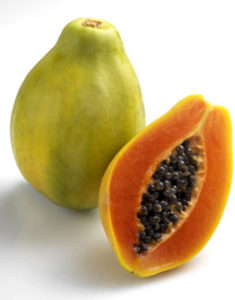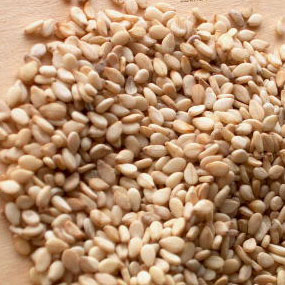 I had a client ask recently about any dietary tips for her peridontal issues. A topic that has popped up from time to time.
I had a client ask recently about any dietary tips for her peridontal issues. A topic that has popped up from time to time.
Firstly, here are some general foods that support the health of teeth and gums and finally I have included my summary of various research articles with FOODS Found To Cause Dental Cavities and Gum Issues and FOODS Found To Be Protective Against Dental Cavities and Gum Issues.
Just as we only have one spine, we only have one set of adult teeth, so we need to look after them. Hopefully the following information assists and supports those who have a health weakness in the teeth and gum arena. As always, improving our health literacy or knowledge helps us to make wiser health choices.
In general helpful foods to assist GUM and TEETH strength and hygiene would include:
 Vegetables such as:
Vegetables such as:
Bok Choy
Broccoli
Cabbage
Carrots
Cauliflower
Kale
Lettuce
Mushrooms
Red and green peppers
Spinach
Wheatgrass
 Fruits such as:
Fruits such as:
Apples
Apricots
Bananas
Cranberries
Figs
Gooseberries
Papaya
Prunes
 Nuts, Grains & Seeds:
Nuts, Grains & Seeds:
Almonds
Brown Rice
Flaxseed oil
Millet
Sesame Seeds
Wheat Bran/germ
Summary points with references below:
* Deficiencies of vitamin D, vitamin A and protein energy malnutrition (PEM) have been associated with enamel damage.
* The likelihood of periodontal disease has been shown to be 20% greater with low intakes of vitamin C and deficiencies in vitamin B2, B3, B6, B12. It is suggested that deficiencies of certain micro-nutrients such as vitamins zinc and iron influence the amount and composition of saliva, limiting the protective effects it has in the oral cavity. This is important because saliva is super-saturated with calcium and phosphate (at pH 7) which favours the deposition of calcium.
* Antioxidant nutrients, for example, ascorbic acid (vitamin C), beta-carotene and alpha-tocopherol (vitamin E) are important buffers of (reactive oxygen) pathogens, and current research is investigating their potential protective role in periodontal disease.
* Dental cavities occur when sugars or other fermentable carbohydrates are ingested, causing dental plaque pH to fall and demineralisation as calcium is lost from the tooth surface.
FOODS Found To Cause Dental Cavities and Gum Issues
– It is the frequency of intake, more than the total amount of acidic beverages and foods consumed that is the strongest determinant of erosion.
– Dental erosion can result from acids from the diet found in fruits and fruit juices, soft drinks—both carbonated and still, some herbal teas, dry wines and vinegar-containing foods. Grapefruit juice, orange juice and cola significantly increase erosion
-Studies show that four or more intakes of sugars per day, or three or more between-meal snacks per day, markedly increases cavities.
– Maltodextrins and glucose syrups are harmful
– Finely ground and heat-treated starch can induce dental cavities (but less so than sugars).
– Foods containing cooked starch and substantial amounts of sucrose appear to be as cariogenic (cause cavities) as similar quantities of sucrose.
(Evidence shows that the sugars naturally present in fruits, vegetables, grains and milk are not associated with dental caries or cavities.)
FOODS Found To Be Protective Against Dental Cavities and Gum Issues
– Less refined starchy staple foods (e.g. wholegrain foods) have properties that protect the teeth from decay. Wholegrain and fibrous foods require more mastication and thereby stimulate increased secretion of saliva, increasing its buffering capacity.
– Peanuts and chewing gum also stimulate saliva production.
– Unrefined plant foods additionally contain phosphates and there is some evidence that they offer some protection against demineralisation.
– Plaque pH studies have shown that consuming a piece of hard cheese following a sugary snack virtually abolishes the usual fall in pH that is associated with sugar consumption.
– Black tea contains fluoride, polyphenols and flavanoids and increases plaque fluoride concentration and reduces the cariogenicity of a sugar-rich diet.
Great Food For Thought.
– PJ. Moynihan The role of diet and nutrition in the etiology and prevention
of oral diseases.Bulletin of the World Health Organization | September 2005, 83 (9)
– PANJAMURTHY, MANOHARAN, RAMACHANDRAN. LIPID PEROXIDATION AND ANTIOXIDANT STATUS IN PATIENTS WITH PERIODONTITIS CELL. MOL. BIOL. LETT. Vol. 10. No. 2. 2005 pp 255 – 264
– C Enwonwu Interface of malnutrition and periodontal diseases Am J C/in Nutr 1995;61(suppl):430S-6S. Printed in USA.
– Thomas,Mirowski, Nutrition and oral mucosal diseases Clinics in Dermatology (2010) 28, 426–431






